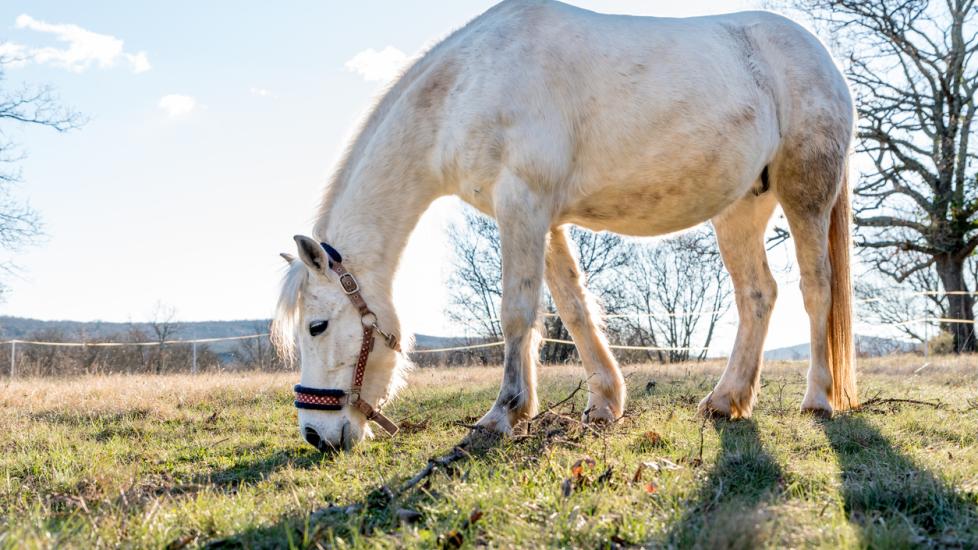Welsh Cob
Updated for accuracy October 26, 2022.
The Welsh Cob is the largest-sized animal within the Welsh Pony and Cob breed registries. Used originally as a farm animal in Wales during the Middle Ages, the quick and friendly Welsh Cob is generally utilized today as a show horse.
Physical Characteristics
Though it is the tallest—standing at least 52.8 inches tall—and stockiest of the Welsh sections, the Welsh Cob's head resembles that of a pony, with large, prominent eyes and a straight profile. It has a long, robust neck, well-defined withers -- the area between the shoulder blades—and muscular, sloping shoulders. The Welsh Cob's chest is also broad and deep, and its legs are short but well-built with flexible joints. All colors are acceptable for the breed except skewbald and piebald.
Personality and Temperament
The Welsh Cob is a safe, receptive and surefooted animal, which makes it an excellent trekking horse. Its obedient and gentle disposition also makes it a terrific mount for disabled riders.
History and Background
Though the exact origin of the Welsh Cob has been lost to time, the breed is mentioned in medieval Welsh literature as a good jumper and swimmer, able to hold and pull a considerable amount of weight. It is also described as an efficient worker on the upland farms, quite capable of carrying loads of timber from the forests. The Welsh Cob even showed its worth as a war horse, exemplified by the battles won by the Welsh Militia on their Welsh Cobs in the 15th century and helping Henry Tudor gain the English throne in 1485.
Before automobiles came into existence, the Welsh Cob was one of the fastest modes of transport available. For a time, prospective Cob stallions in South Wales were auditioned by pulling a cart with two passengers from Cardiff to Dowlais, a stretch of about 35 miles. The best horses made it in less than three hours, without compromising on speed and performance.
In 1949, the UK’s Welsh Pony and Cob Society divided the breed into four types based on size and bloodlines: The Welsh Mountain Pony, the Welsh Riding Pony, the Welsh Pony of Cob Type, and the Welsh Cob.
Health and Care
Because Welsh Cobs are hardy and easy keepers, they can easily become overweight if fed too much hay or grain. This can lead to potential development of laminitis, equine metabolic syndrome (EMS), or pars pituitary intermedia dysfunction (PPID) otherwise known as Cushing's Disease.
Featured Image: iStock.com/HMVart
